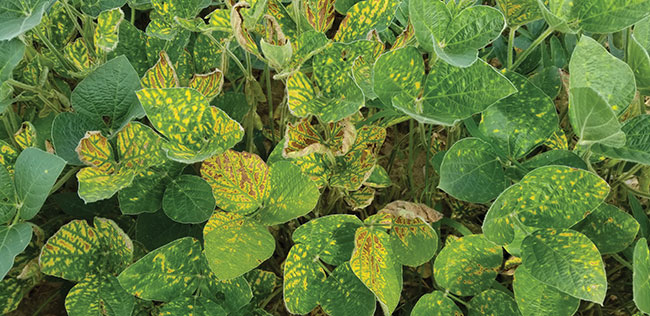
Features
Emerging Trends
From the Editor: Lessons learned in a year
May 24, 2021 By Stefanie Croley
 Photo courtesy of Owen Wally.
Photo courtesy of Owen Wally. Our April issue is traditionally focused on pests and diseases, and in our April 2020 issue, I wrote about how disease management and prevention is a top-of-mind issue for producers, and one that the ag community has a lot of experience in.
When I first wrote that column in early March, the media was abuzz with talks of the novel coronavirus and COVID-19. Little did we know, last March was just the tip of the iceberg. Here we are a year later still in the midst of the pandemic, and still talking about it. I’m willing to bet it will be a point of conversation for many years to come.
An epidemiologist or plant pathologist I am not, but I see parallels between a disease or virus that affects humans and one that affects plants – namely, the unpredictability. When a new threat emerges, there’s much to be learned about it: how to diagnose it, management, prevention, and the short- and long-term effects. The scientific community works together to find solutions, and for a while it seems there are more questions than answers. Eventually there’s a glimmer of hope at the end of the tunnel in the form of a means of management or prevention. Last spring, we didn’t know a lot about the novel coronavirus, and while we still don’t have all of the answers, we’ve come far in a short period of time.
The same can be said for crop disease management, or even insect pests or troublesome weeds. So much happens behind the scenes, through lab work and fieldwork, to find answers to the unknown – and the work is never done. Over the last several years, we’ve published countless articles on diseases like clubroot and Fusarium head blight, or pests like wireworm and weevils. As threats grow and change, so too do the methods in the lab and field, and with help from the entire industry, more and more solutions and management options become available.
On both the pandemic and agronomy fronts, we’ve learned a lot in the last year, and sometimes there’s so much information that it’s hard to wade through and determine who to listen to. I’ll leave you with a piece of advice that came from Dr. Don Flaten’s presentation at the Top Crop Summit, held virtually in February. Recently retired from the University of Manitoba where he was a professor in soil fertility, crop nutrition and nutrient management, Flaten shared several anecdotes and lessons learned over his 45-year career as a soil scientist, but this one in particular received rounds of virtual applause from the audience: remember the difference between science and non-science and note that non-science sounds a lot like nonsense.
Best of luck as your season begins.